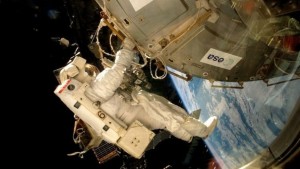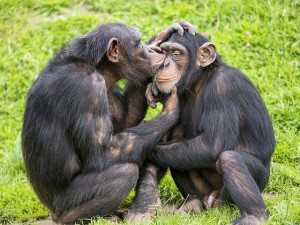You are probably familiar with the old nature versus nurture debate if you have ever taken a course in psychology or philosophy. It inquires whether our development is induced by our DNA, individual choices we make or by our environment and circumstance. Twins are often used to demonstrate the effects environmental factors have on phenotype.

Twins by David Merrigan. Available by Flickr Commons 2.0.
In the early 1990’s a scientist by the name of Conrad Waddington found that environmental stress was causing certain phenotypes of the Drosophila fruit fly to assimilate. In other words, these phenotypes that were first induced by the environment were becoming permanent and hereditary! Waddington named this area of research Epigenetics; a now growing field of research that looks at how environmental factors can change our phenotype.
Dr. Courtney Griffin, a member of the Cardiovascular Biology Research Program at Oklahoma Medical Research Foundation discusses the importance of Epigenetics in this TedX video.

Many studies in recent years have attempted to reveal a connection between low income and risk for diseases such as heart disease and cancer. What all of these studies have looked at is telomere degradation. As cells divide, the length of these chromosome-caps contracts implying aging. As an indicator of aging, telomere degradation remains unreliable and results from these studies have proven inconsistent.
A new study by Ronald Simons et al. has demonstrated a correlation between accelerated aging and income by a new method. The researchers were able to identify certain epigenetic markers that can be linked to aging by way of DNA methylation. This process involves adding methyl groups to DNA. As the methylation level of a gene increases, the expression of the gene decreases (Read more about DNA methylation here).
A sample of 100 middle-aged, American black women were chosen for the study as the population of black men in America had high incarceration rates (forcing the financial burden on the mother of a family) and low family incomes. The study controlled for other influences of socio-economic status (SES) such as education, and used a new method of structural equation modeling to find that low income was associated with biological aging.
Income inequality is one of the largest problems the United States faces today as 99% of new income is being distributed to merely one percent of the population. This study implies that this problem may be even worse than previously understood. If these biological effects are in fact hereditary, the vast population of low-income wage earners in America can expect their children and grand children to live shorter lives.
-Johnny Lazazzera





